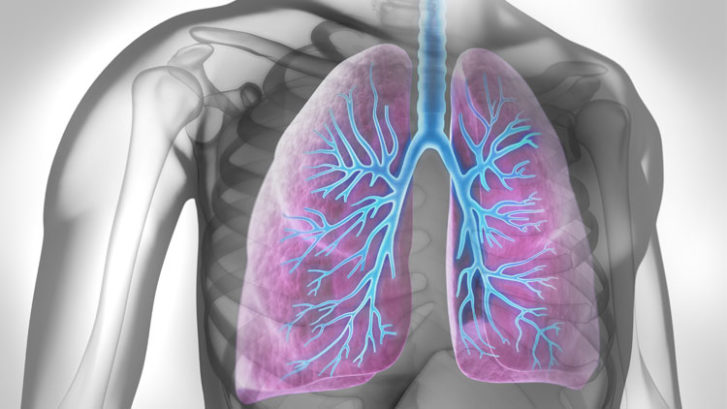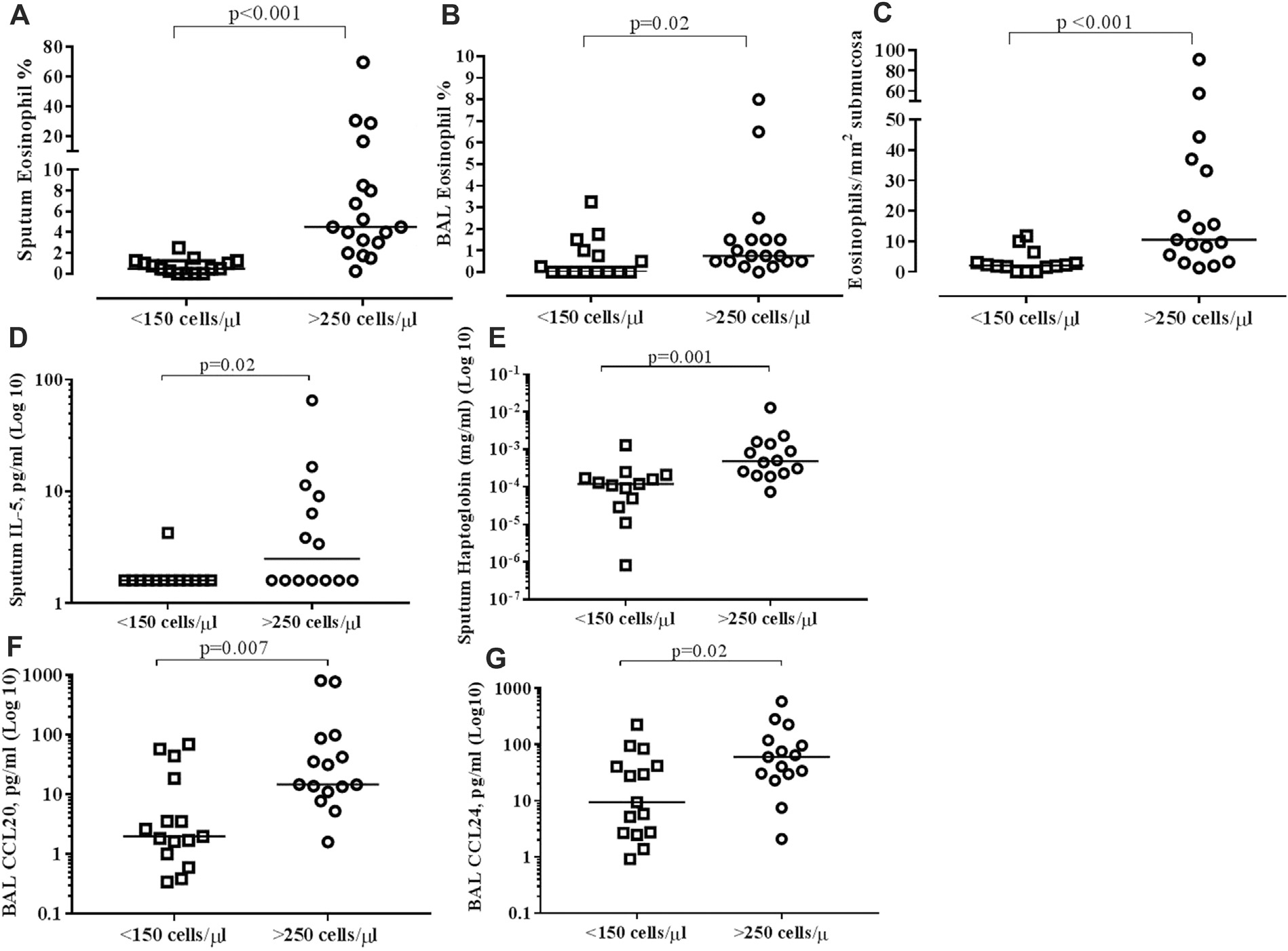Pulmonary Inflammation in Patients with Chronic Obstructive Pulmonary Disease with Higher Blood Eosinophil Counts
Patients with chronic obstructive pulmonary disease (COPD) exhibiting high eosinophils in sputum and blood have a better response to inhaled corticosteroid intervention. In a letter to the editor, Kolsum et al characterized the inflammatory profile of COPD patients comparing those with high (>250 cells/μL) versus low (<150 cells/μL) blood eosinophil numbers. Using Myriad RBM’s custom MAP technology, 102 inflammatory proteins related to pulmonary inflammation were measured in serum, sputum, and BAL (bronchial alveolar lavage).
In the figure above, COPD patients classified as having high blood eosinophil counts also demonstrated elevated levels of eosinophils in sputum, BAL, and the submucosa. Additionally, COPD patients with high blood eosinophils have increased sputum IL-5 and haptoglobin and BAL CCL20 and CCL24. Both IL-5 and CCL24 are well known to be involved in eosinophil trafficking and survival. The authors concluded that differential sensitivity to clinical treatment (such as inhaled corticosteroid) in COPD patients with high or low blood eosinophil counts is associated with these defined inflammatory mediators.



